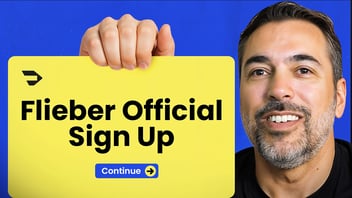Congratulations! You've started your free trial with Flieber, and trust me, this can really change your life as an operator. But now what?
Flieber works by connecting data from all over your business. The secret to success is setting it up correctly and then making it part of your daily routine.
Let me walk you through it.
Phase 1: The Seamless Setup
The first step is plugging in your data. We’ve made this process incredibly fast and flexible, often taking just a few hours.
Connect Your Data Sources
We offer two types of integrations to ensure we capture all your information:
- Native Integrations: These are the easy, click-and-go connections inside the platform for tools like Amazon, Shopify, and Walmart.
- Assisted Integrations: For everything else (like specific wholesale accounts), we use Google Sheets as a middleware. Just make a request inside the integrations page, and our team will take care of the rest, usually within a few hours
You’ll start by connecting your sales channels, then your inventory data from locations like FBA, WFS, Deliverr, or ShipHero.
Map Your Supply Chain
Once the data is connected, it’s time to tell Flieber how your operations actually work. This means two things:
- Mapping SKUs to Products: Tell Flieber which individual SKUs belong to which finished products.
- Mapping Stores to Inventory Locations: Tell us which warehouse is storing or fulfilling what.
We have automations to make this super simple, but the system also lets you create customized configurations at the SKU level if you need more advanced control. The best part? You can see the whole thing visually through our Supply Chain Map—just boxes and arrows, super easy to follow.
Define Operational Parameters
Finally, you power Flieber's forecasting logic by defining how your operation runs. You'll input details like:
- Suppliers
- Lead times and MOQs (Minimum Order Quantities)
- Safety stock and target days of coverage (how long you want your inventory to last between reorders)
Pro Tip: If you have any inventory data that can’t be automatically connected (which is rare), you can use a Google Sheet to sync it. Most of our customers don't need to input anything manually.
Phase 2: Your Daily Flieber Routine
Once you're fully onboarded, the main secret to success is to make Flieber part of your daily routine. You'll move from reacting to planning ahead with clarity.
- Keep Updates Current: Head to the Inbound Shipments Page to review your POs and transfers. If a date is wrong or a new SKU shows up, update it immediately to keep forecasts accurate.
- Spot Shifts Early: Check the Sales Analytics Page to see how you did yesterday compared to the same day last year. This is super useful for spotting sudden shifts in demand.
- Find Anomalies: Go into the Sales Forecast Page to look for anything weird—a product suddenly trending up or down. You'll catch these anomalies here.
- Take Action: The big one is the Inventory Forecast Page. Spot products at risk of stock-out or overstock, or items that need to be moved or reordered.
The Power of Proactive Planning
If you see a product about to stock out and you won't have time to replenish, you need to be proactive.
- Talk to your marketing team: Maybe you should lower ad spend or raise prices to stretch the remaining inventory and improve your margins.
- Model the decision in Flieber: Go back into Flieber and add that change to your forecast. Your inventory forecast will update in real-time, and you instantly see if that adjustment is enough to avoid the stockout.
That’s the power of Flieber. You're not reacting; you're planning ahead with clarity. The trick is to stay close to the system, use it every day, and keep it always updated. You'll start making faster, better decisions that protect your inventory, grow your brand, and secure your margins.
Secure Your Inventory Now
You've done the hardest part by signing up. Now, put this routine to work. You'll find that making smart decisions that protect your inventory and grow your brand becomes your new normal. Start your free trial today!



